Top 3 Blockchain Development Environments
Top three development environments used by blockchain developers to create, test, and deploy smart contracts.
Blockchain has brought about a massive transformation in different industries, from the field of security to finance and so on. Due to this, there has been a rise in the need for blockchain developers.
The availability of so many tools, libraries, and frameworks presents a small challenge because it might be confusing to know which one to use and when.
This article will explore the top three development environments used by blockchain developers to create, test, and deploy smart contracts. We will also learn when and why each one is used.
What is a Blockchain Development Environment?
A blockchain development environment which is also called an IDE (Integrated Development Environment) is a software setup that is used to build, test, and deploy smart contracts.
A blockchain IDE does three things:
- Compiles your contracts locally on your machine.
- Tests your contracts efficiently.
- Deploys your contract to a network node.
An IDE consists of these parts:
A Code Editor:
The code editor is used for writing code and assists the developer with unique features like syntax highlighting and autocompletion.Debugger:
This examines the developer’s test programs for bugs.Compiler:
The compiler is responsible for translating the written source code into machine language.Automation tools:
These are tools that automate repetitive tasks to save more time, like automating a repeated test for different programs.
In one sentence, a blockchain development environment is a complete package of tools for building smart contracts.
Below, we'll explore the top 3 blockchain IDEs and their features:
- Hardhat
- Truffle
- Remix
What is Hardhat?
$ npx hardhat
888 888 888 888 888
888 888 888 888 888
888 888 888 888 888
8888888888 8888b. 888d888 .d88888 88888b. 8888b. 888888
888 888 "88b 888P" d88" 888 888 "88b "88b 888
888 888 .d888888 888 888 888 888 888 .d888888 888
888 888 888 888 888 Y88b 888 888 888 888 888 Y88b.
888 888 "Y888888 888 "Y88888 888 888 "Y888888 "Y888
👷 Welcome to Hardhat v2.9.9 👷
? What do you want to do? …
❯ Create a JavaScript project
Create a TypeScript project
Create an empty hardhat.config.js
Quit
Hardhat is an Ethereum development environment. You can utilize its various components to edit, compile, debug, and deploy your dApps and smart contracts. It includes automated processes built in to aid developers in streamlining complex procedures.
Hardhat has tons of plugins and allows for customization, flexibility, and extensibility, giving developers full control over their projects.
Additionally, it has a built-in local Ethereum network node that lets you debug your code locally on your computer.
Features
- Hardhat has a ton of plugins which makes it easily customizable.
- Hardhat makes use of
Ether.jsas its default web3 library. - Hardhat can run the
console.logfeature for debugging. - Hardhat provides native
Typescriptsupport and also has a Vscode extension that adds solidity support for the Vscode editor. - Hardhat comes with a built-in local Ethereum network called the Hardhat Network, for running and deploying your smart contracts on your local machine.
Who uses Hardhat?
1. Chainlink
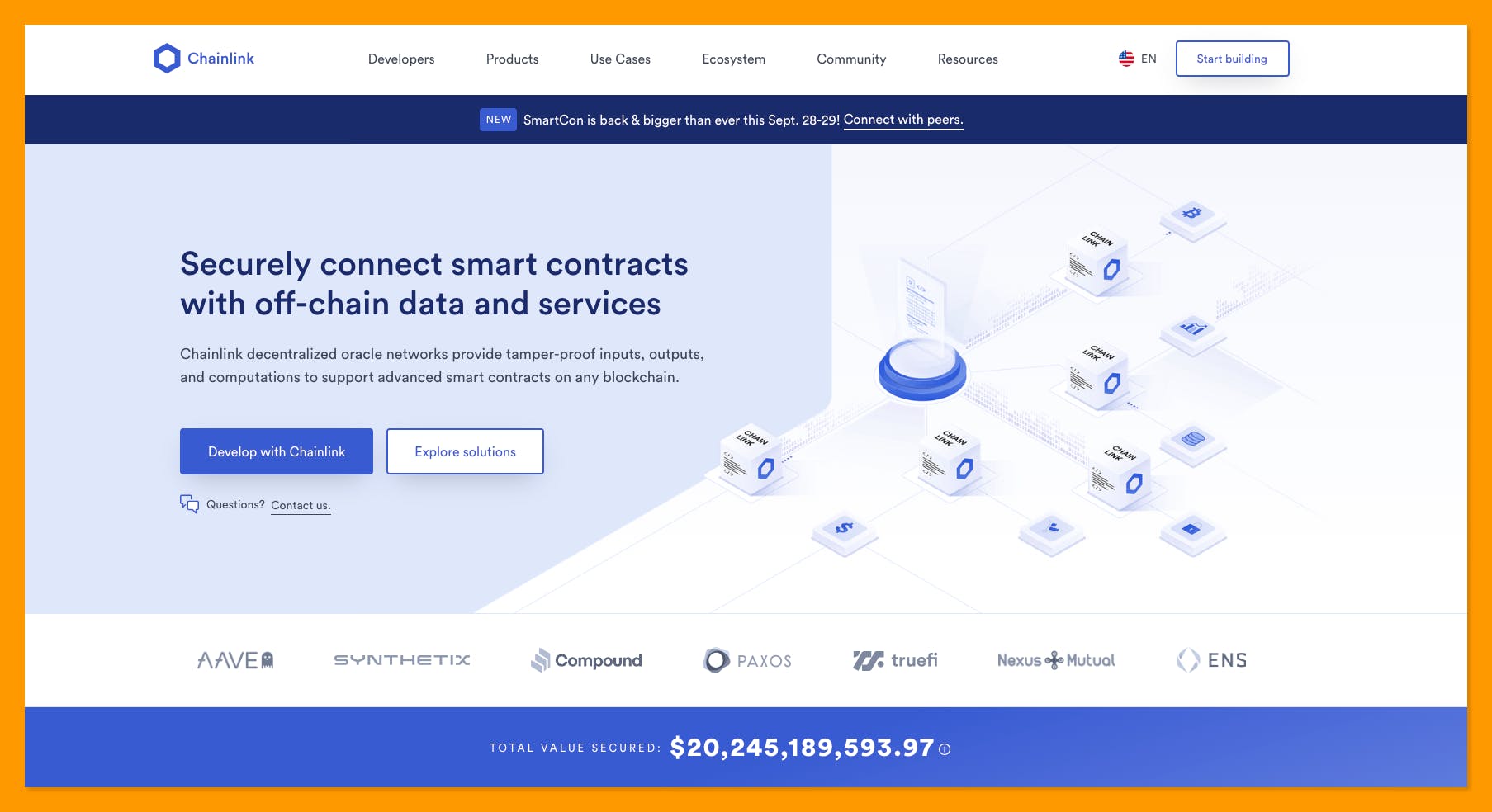
A blockchain oracle network based on Ethereum, Chainlink is a decentralized network that has made it easier to move tamper-proof data from off-chain sources to on-chain smart contracts.
2. Uniswap

Popularly known as one of the leading crypto exchanges, Uniswap is an open source and decentralized platform that runs on the Ethereum blockchain. It uses a different type of trading model called an automated liquidity protocol.
3. Aave
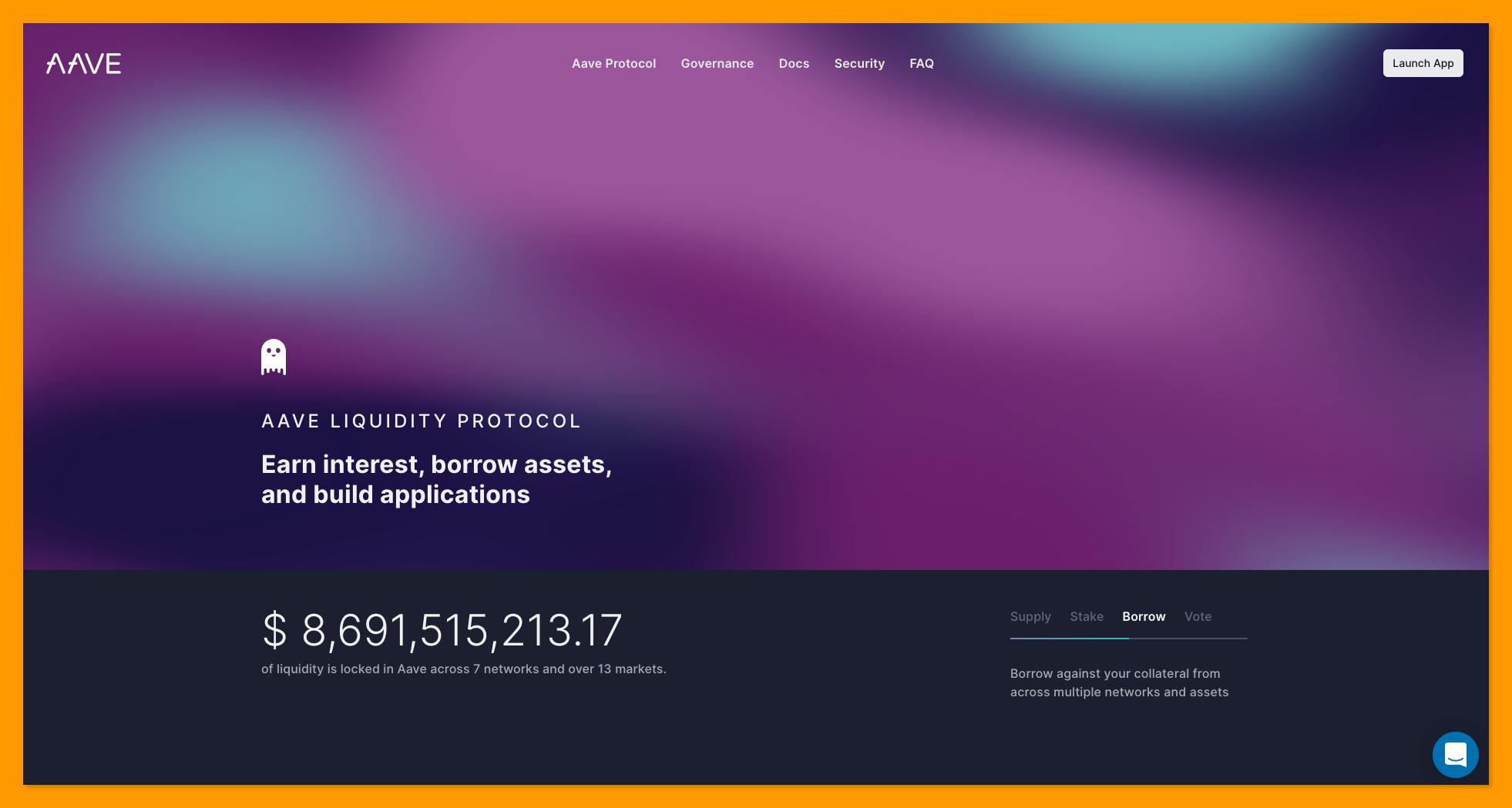
Aave is a system of smart contracts that runs on the Ethereum blockchain. It enables assets to be managed by a distributed network of computers running its software. It is a decentralized lending platform that eliminates middlemen and lets users lend, borrow, and earn interest on crypto assets.
4. SushiSwap
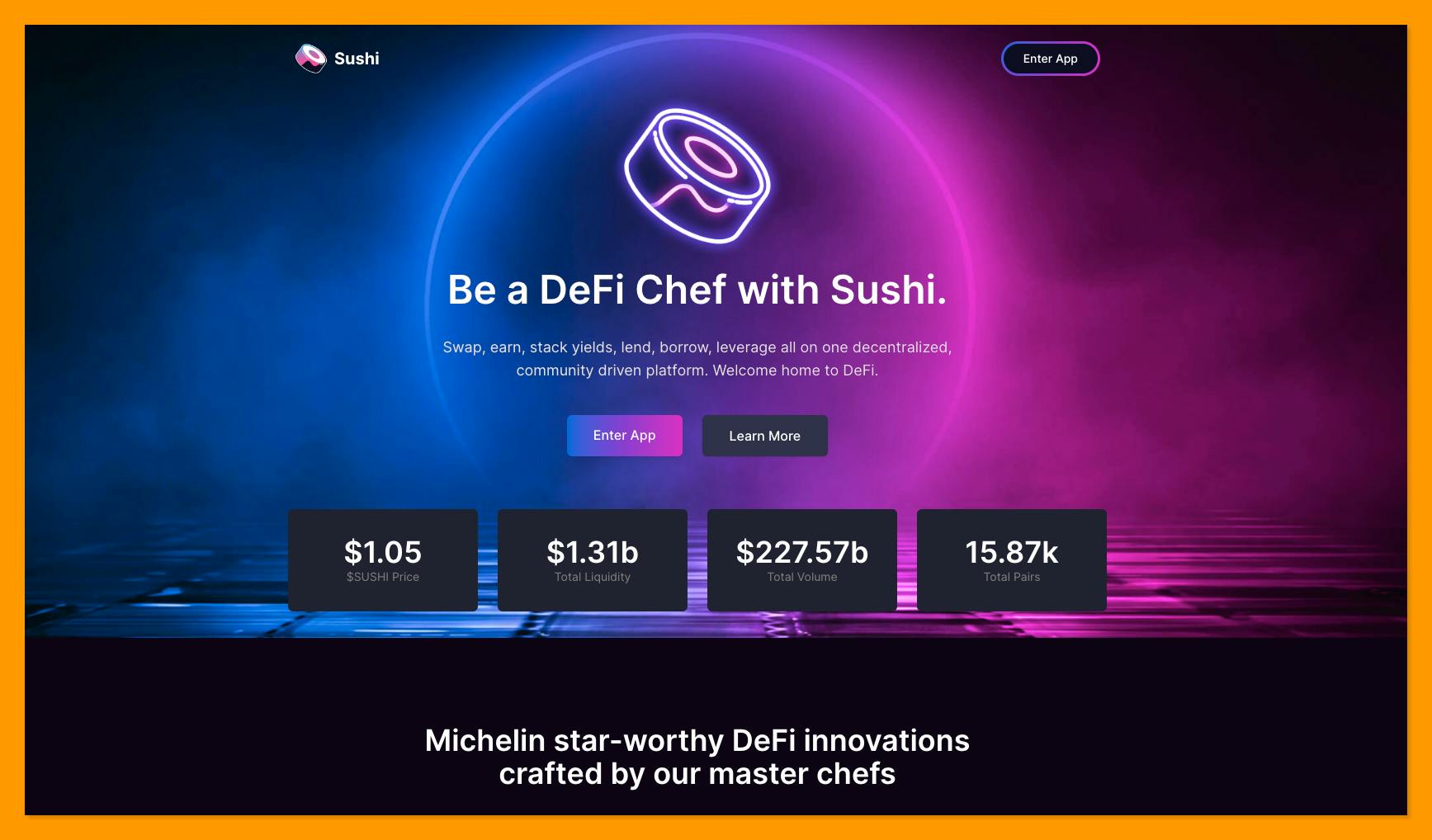
SushiSwap is a decentralized exchange originally forked from Uniswap, it makes use of smart contracts in liquidity pools (a liquidity pool is where users become liquidity providers by locking their crypto assets) to process cryptocurrency transactions.
5. ENS

Ethereum Name Service is basically the Domain Name Service but with the superpowers that the Ethereum blockchain provides. The rules for owning a domain are run by smart contracts and you are permitted to create subdomains under a unique name.
Why use Hardhat?
- Hardhat is more flexible compared to Truffle.
- Hardhat permits the use of both Ether.js and web3js.
- Hardhat has good debugging capabilities.
- Hardhat would give you stack traces of what happened in your code while debugging.
- Most big projects are migrating to Hardhat.
Documentation and Resources
The official documentation for Hardhat is very concise and straight to the point. It has different sections that highlight the different features of the IDE and it explains them in-depth, using code snippets and a step-by-step outline. The features highlighted are;
- Hardhat Runner
- Hardhat Network
- Hardhat for Vscode
- Hardhat Chai Matchers
- Hardhat Network Helpers
The official Hardhat tutorial is another useful tool; it provides instructions on how to set up the environment, create smart contracts, and deploy them to the Hardhat and Ethereum networks. The tutorial is beginner friendly and has external links to help newbies understand how to use the IDE.
What is Truffle?

Truffle is a development environment and testing framework used to create, test, and deploy smart contracts to the Ethereum test network or the main network. It utilizes the node.js package management and provides a CLI (Command Line Interface) for managing and creating smart contracts.
You can deploy your smart contracts privately using the private blockchain environment provided by Truffle, named Ganache. Depending on your taste, you can use one of the two versions of the Ganache blockchain that are available: the UI (User Interface) or the CLI (Command Line Interface).
Features
- Truffle makes use of web3.js as its default web library.
- Both Hardhat and Truffle support forking features (replicating the software and making experiments without affecting the original software).
- It comes with a collection of frontend libraries called Drizzle for building frontend for dApps.
- It supports development with Filecoin and Tezos, it also has an extension for Vscode.
Who uses Truffle?
1. Amazon

Everyone knows Amazon, a multinational American technology firm with a focus on digital streaming, cloud computing, and artificial intelligence.
2. Microsoft
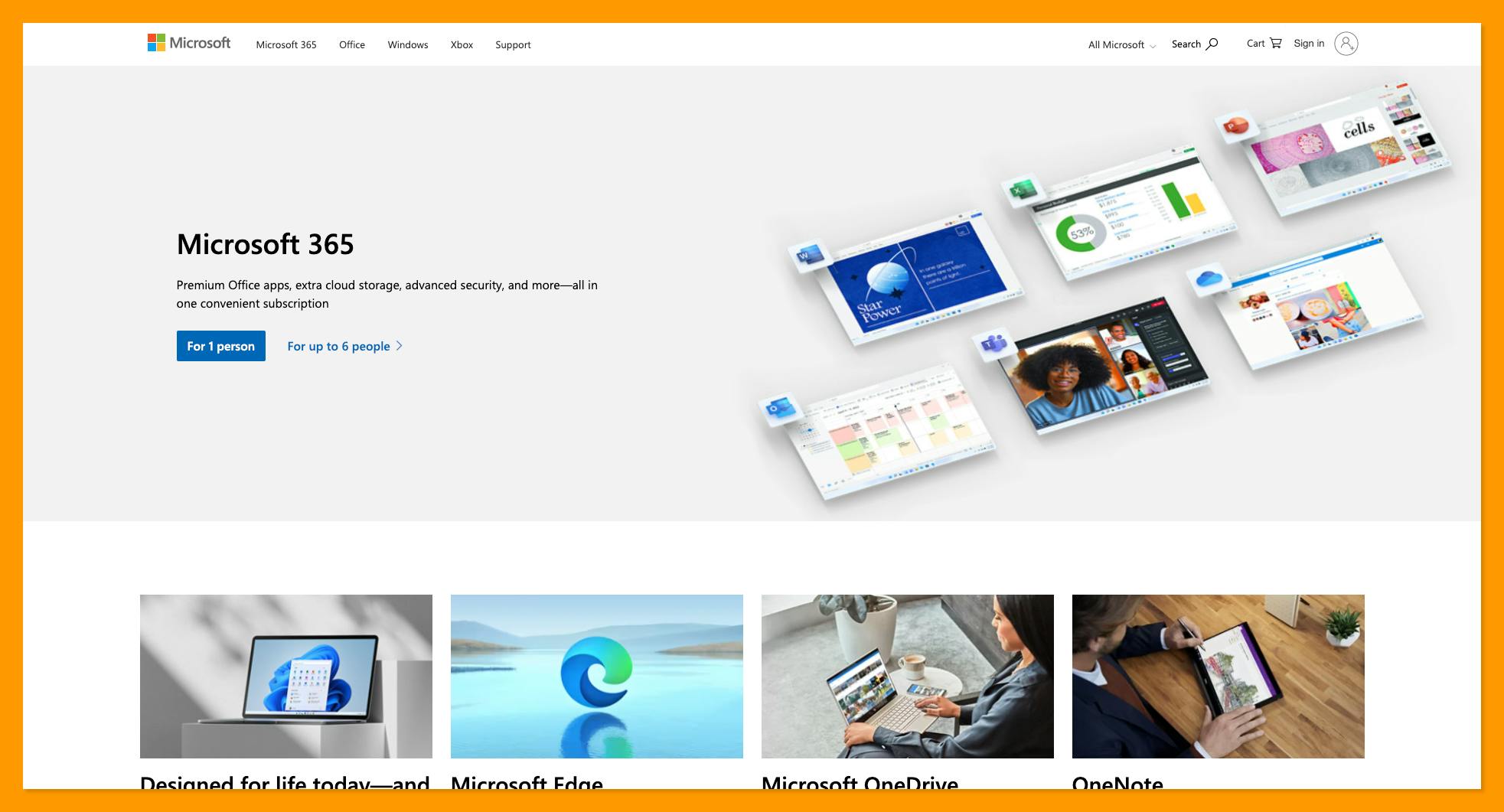
They also need no introduction, chances are you're reading this article from one of their products. Microsoft is an American multinational company that produces personal computers, electronic products, software products, and other related services.
3. Consensys
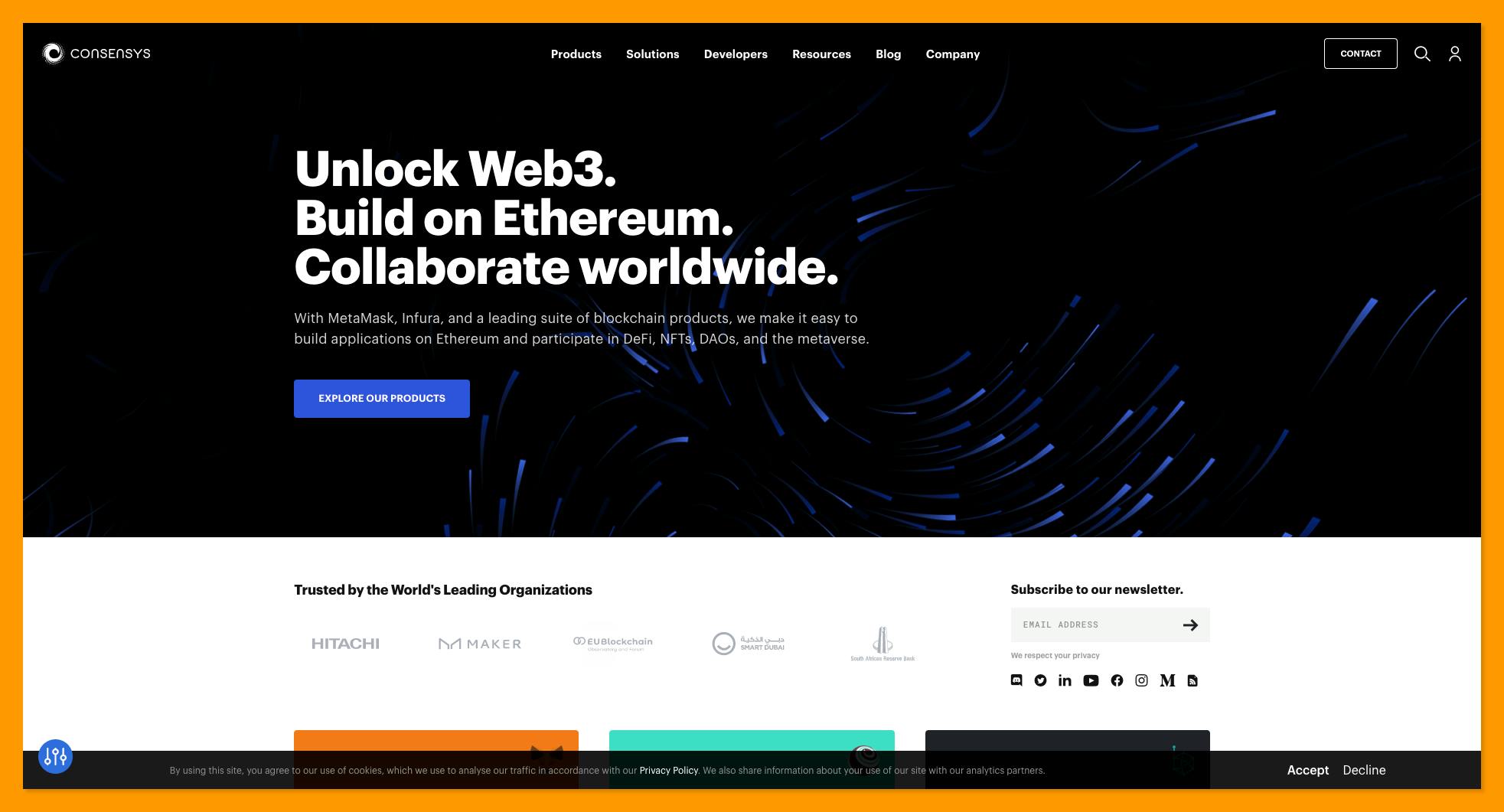
Consensys is a blockchain software company that has been involved in popular blockchain projects like Metamask and Infura.
4. J.P. Morgan

J.P. Morgan is an American multinational investment bank and financial services holding company providing solutions to the most significant organizations, governments, and institutions around the world in more than 100 nations.
5. ShapeShift
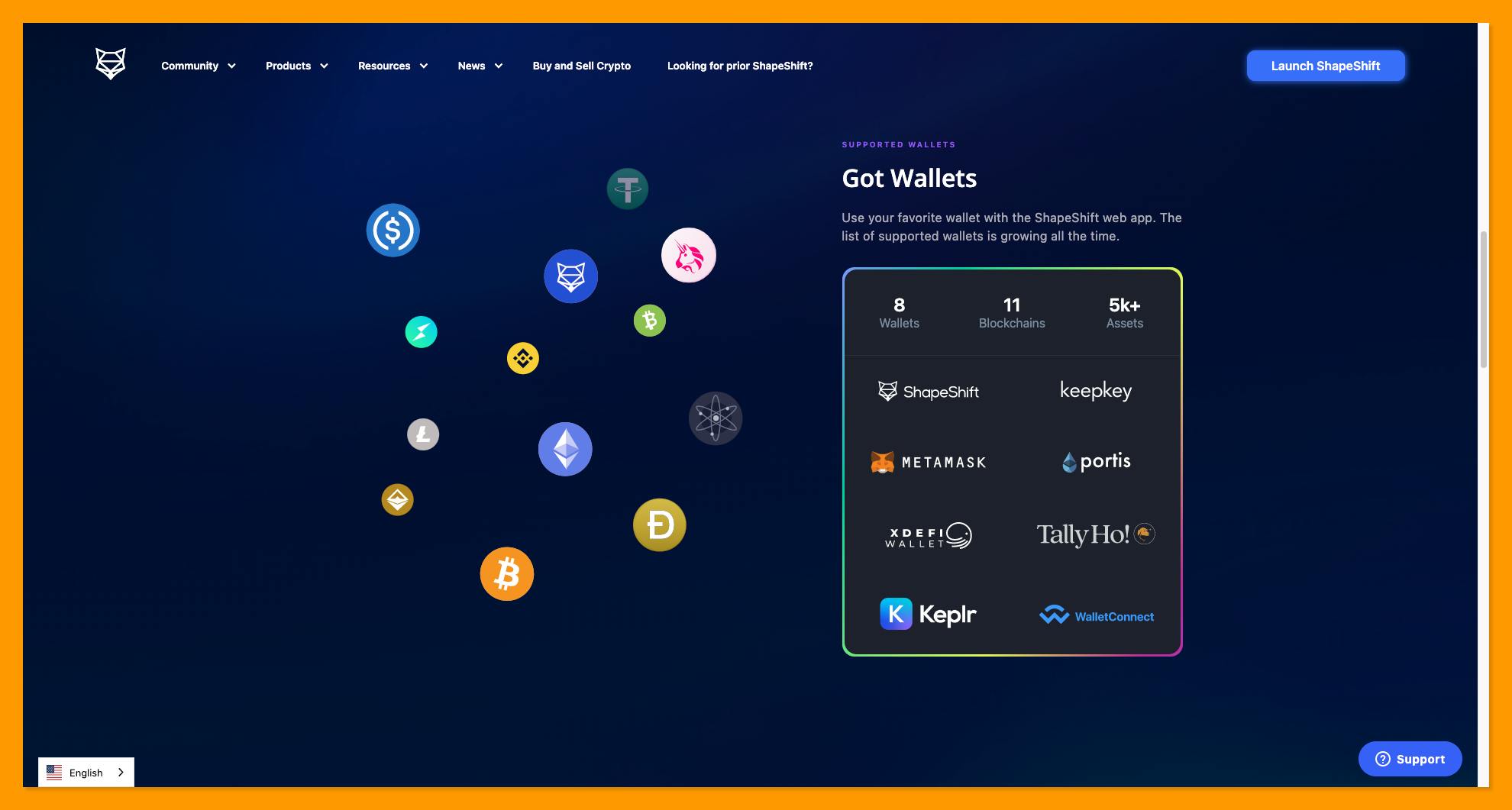
ShapeShift is a private cryptocurrency exchange platform that allows users to earn, buy, and trade cryptocurrency assets
Why use Truffle?
- Truffle is a more static developer environment; it offers less customization flexibility; most developers who want to get right to work would prefer adapting to this framework.
- The Ganache UI is very friendly for beginners.
- Truffle is the oldest and the more popular framework.
- Truffle has a vast plugin ecosystem.
Documentation and Resources
Truffle has a documentation that is easy to understand, with the documentation you'll learn how to use the different features of the IDE and its native blockchain. It also has different guides on how to integrate it with different blockchains, like Tezos, Filecoin, and Hyperledger Fabric (EVM).
Since Truffle has been around for a while, an ecosystem has been built around it, making it simple to find tutorials, articles, and other helpful resources to aid in understanding how to use the IDE.
What is Remix?
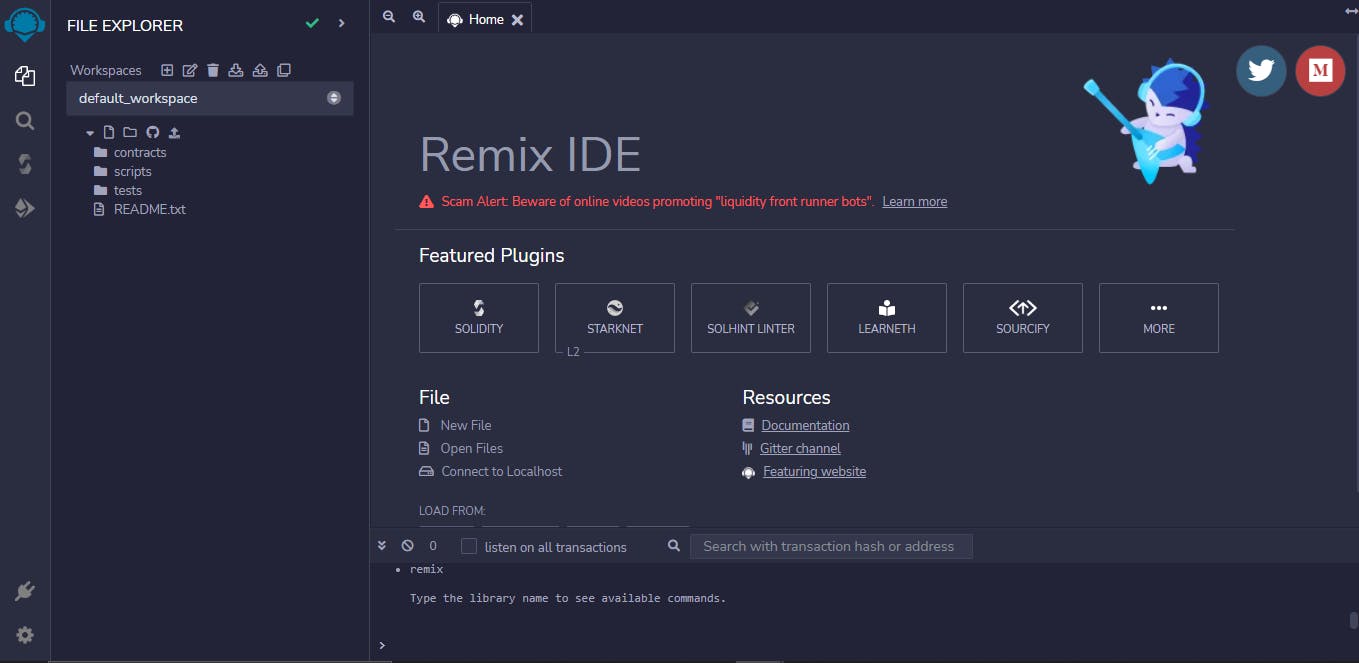
Remix is an open-source web and desktop Integrated Development Environment for developing Ethereum-based applications. It is an online tool that enables you to write, compile, and deploy Solidity smart contracts directly from your browser.
It has a rich set of plugins, and an easy-to-use graphical user interface (GUI) and it requires no setup of any sort. Because of its striking features, it is popularly referred to as a playground for learning how to use the Ethereum network.
It is important to note that the Remix IDE is a sub-project of something called the Remix project, this is often used interchangeably. Other sub-projects are the Remix Plugin Engine and Remix Libraries.
Features
- It has a unique feature that permits you to write code, compile code, and deploy smart contracts directly in your browser.
- It has a set of plugins that allows you to extend the IDE and add custom functionality for your project, these plugins are accessible in the icon tab.

- It has a CLI that can be used to listen for transactions, check transaction details, and debug.
Who uses Remix?
1. Ethereum.org
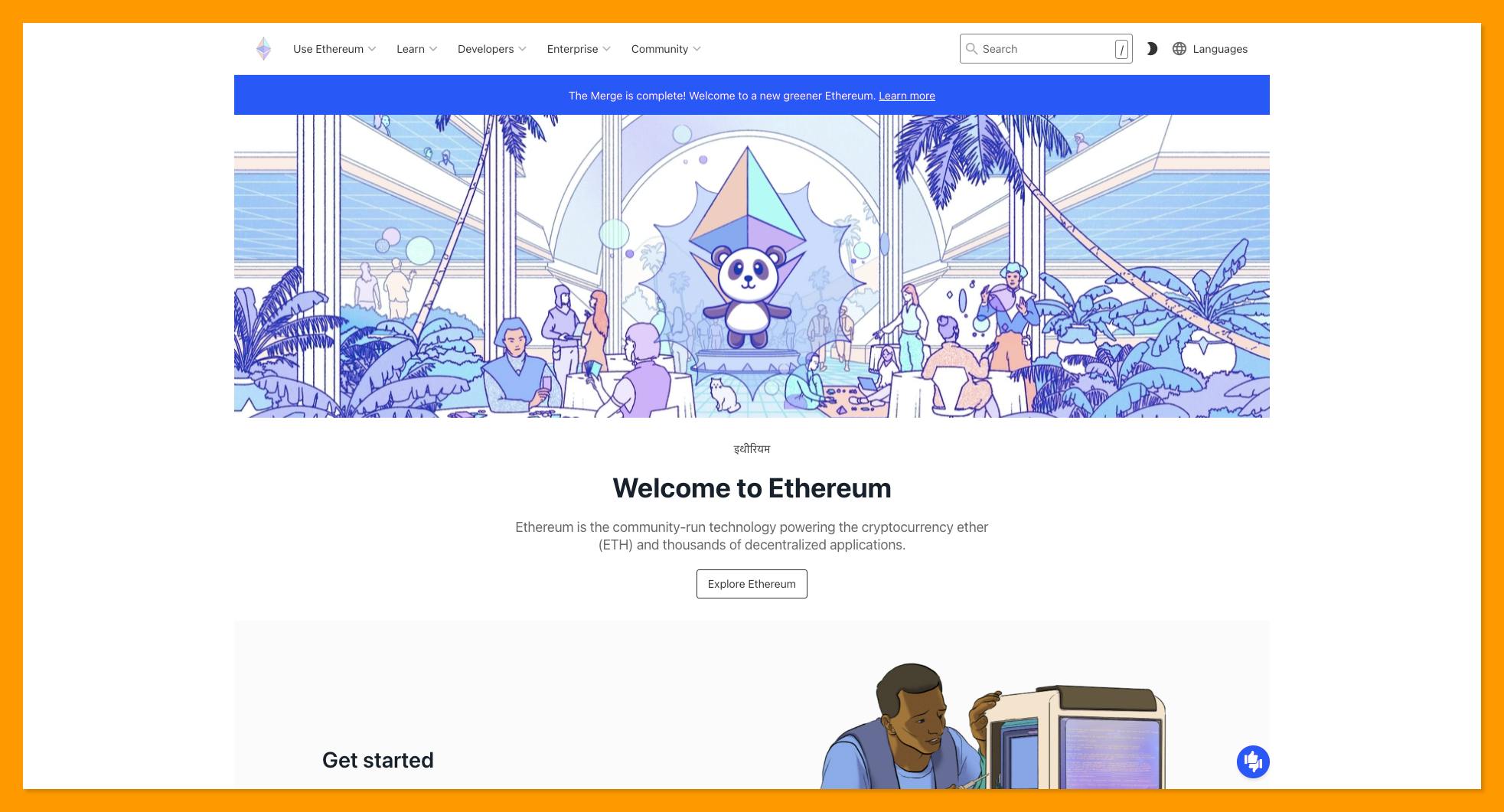
Ethereum.org is a platform created for the Ethereum community, a place where members come to educate themselves and get the latest news about Ethereum. It's basically a place to get all things Ethereum.
2. OpenSea

Also known as the world's largest and first NFT marketplace, OpenSea is a decentralized marketplace that allows users to create and sell Non-Fungible Tokens.
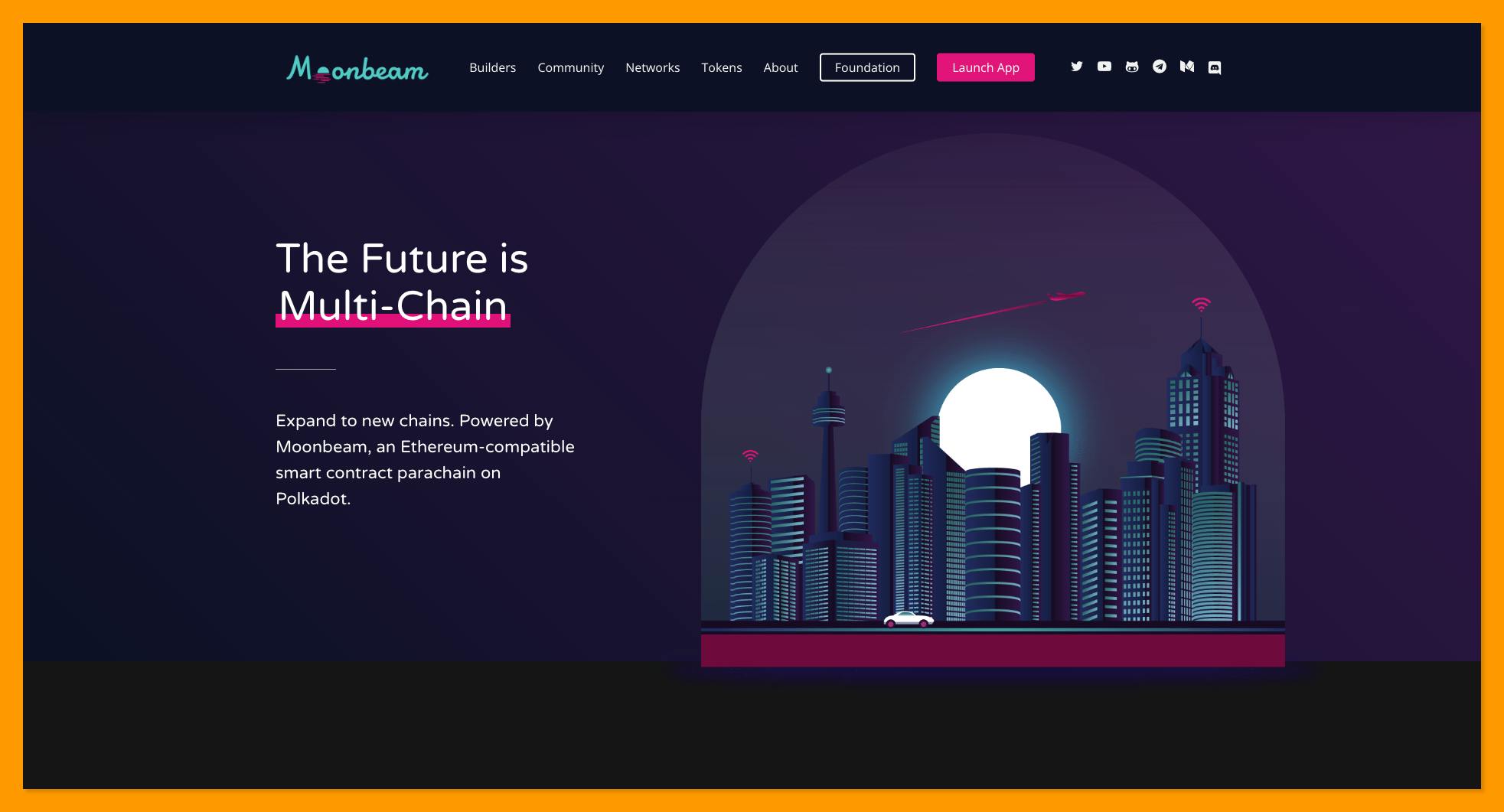
Moonbeam is a crypto token based on the Polkadot blockchain. Users of Polkadot can build their own parachains (blockchains that are connected to Polkadot's main relay chain), so Moonbeam is a parachain connected to the Polkadot main relay chain. Moonbeam operates in such a way that it can connect to and communicate with the Ethereum blockchain even as it runs on Polkadot.
Why use Remix?
- It is the simplest development tool for those getting started with Ethereum development.
- It has an easy-to-use GUI.
- It is a better tool to use when building smaller projects.
- It is a better tool to use when you want to experiment with a new solidity feature.
Documentation and Resources
The remix documentation is an easy-to-navigate resource, it gives a beginner a good introduction to using and familiarizing yourself with the IDE's layout. The topics that are covered include:
- The Default Modules
- The Solidity Modules
- Unit testing
- External intergrations
- Understanding Remix
Wrapping Up
If you are starting out, I would advise you to start with Remix, then when you want to work on big projects that require scalability and extensibility, you should use Hardhat or Truffle. Having said that, there’s this popular saying that goes thus;
A bad workman always blames his tools. - African proverb
This is also true in this context, I have made an attempt to enlighten you on which tool to use and the advantages each has over the other. But this wouldn't make any sense if you don't learn to be efficient at what you do.
This article is a part of the Hashnode Web3 blog, where a team of curated writers are bringing out new resources to help you discover the universe of web3. Check us out for more on NFTs, DAOs, blockchains, and the decentralized future.

